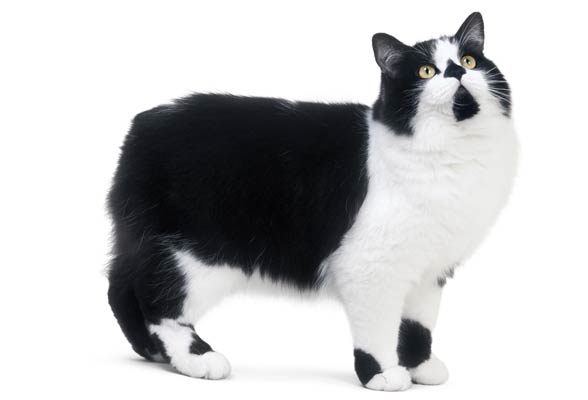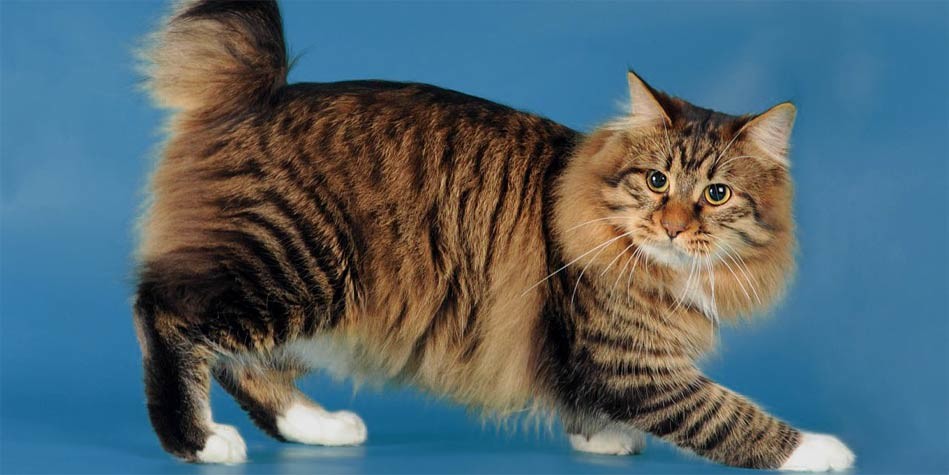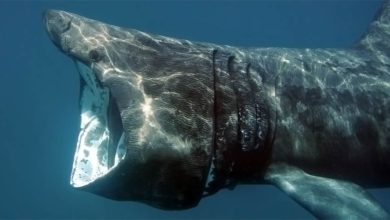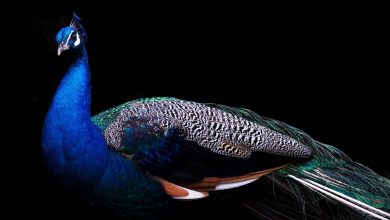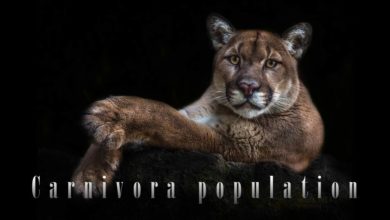Cymric cat – long-haired cat without a tail
Cat breed – characteristics
Tailless cats with long hair started to appear first on the Isle of Man, and then in Canada. However, they derive their name from the place with which they have nothing in common – Wales. In many countries, this breed is rare. These cats are most popular in the UK and North America, and that is a shame. The Cymric cat would certainly be liked by many Europeans because of its friendly disposition “spiced up” with alertness and the need to protect their carers.
FIFe classification
- Category III: Shorthair cats
- EMS code: CYM
- Other names: Manx Longhair, Semi-longhair Manx variant
- Origins: The Isle of Man, Canada (breeding program)
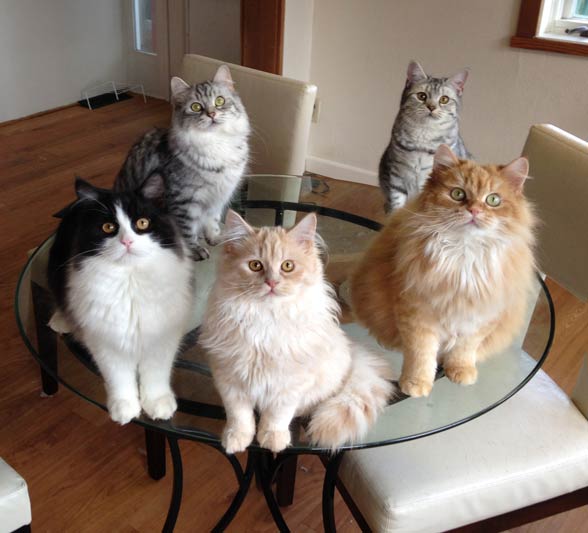
History of the breed
Longhair cats without tails started to appear in the middle of the 20th century among the Manx living on the Isle of Man. In the beginning, breeders did not recognize that strange variety as the “true” Manx cat. However, some of them became fascinated with bizarre-looking kittens.
The first registered cat of the new breed was, however, an individual from Canada – specific Manx cats started to appear there too. It was in the 1960s. Breeders interested in these cats discovered that the gene responsible for long hair is recessive, and thus, in order to keep this feature in Manx cats they need to be crossbred with longhair breeds. The introduction of other pedigree cats to the breeding program helped to expand the gene pool and strengthen the characteristic feature – long hair. That is how a new official cat breed – the Cymric cat – has developed.
Cymric cats did not become popular rapidly, many years had to pass before feline federations recognized them as a fully-fledged breed. Although the cat was already noticed in the 1920s, and the breed was developed in the 1960s, it was ignored until the mid-1970s. Nowadays, the Cymric cat is the most common in Great Britain (it hasn’t been recognized there yet as a separate breed) and North America (it is recognized as the longhair variant of the Manx cat), but it’s still recognized as rare.
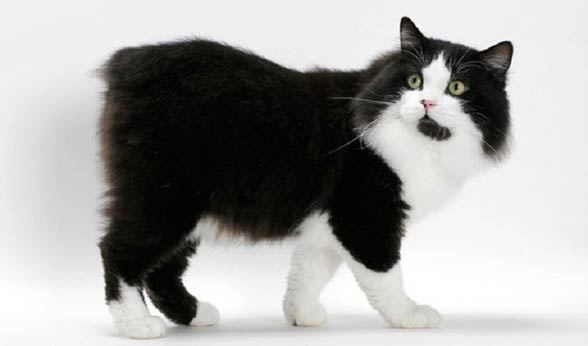
Characteristics
Appearance
The Cymric cat has a round head and large, round eyes. The body is sturdy and strong, the chest wide, the rump is short and wide, the forelegs are shorter than the hind legs. The hind legs have also strong and long thigh muscles, which makes the cat look like a rabbit.
The hair is long, soft, silky smooth. It consists of two layers, and its coloration may be of various shades. Tabby, tricolored and tortoiseshell individuals are often found. There is a ruff around the neck, and longer hair on the hinder legs. Hair is also longer on the stomach than on the other parts of the body. Tufts may occur in the ears and between the toes.
Apart from its long hair, the Cymric cat is known for its reduced tail. However, not all individuals lack the tail completely. There are several types within the breed:
- Longies/fully tailed – cats with tails of an average length
- Stumpies – cats with short tails (3-4 cm), up to 1/3 of a normal tail length
- Rumpy-riser – there is a knob in the place of the tail
- Rumpy – the tail is nonexistent, it is the most valued for cat show purposes
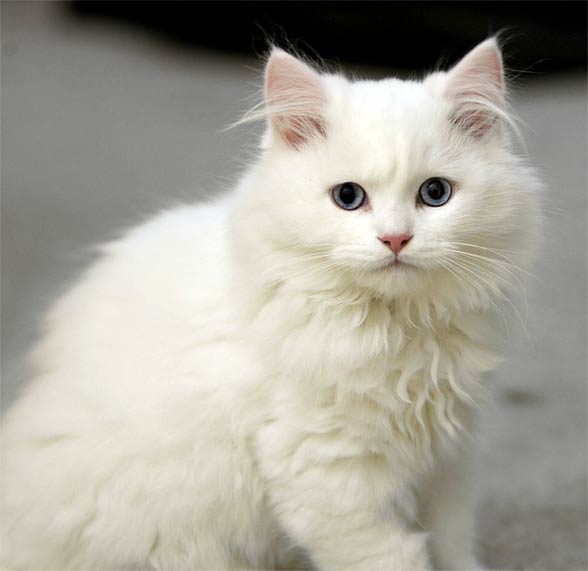
Temperament
From the beginning, these cats were great mice hunters. Today this feature has not disappeared in Cymric cats, therefore, you will not only have a beautiful cat in the house, but also a rodent slayer. Due to that, alertness is one of the main features of these cats’ temperament. They have a personality of a guardian that observes the environment and responds with growling to an intruder. They can even attack if they decide that the situation is threatening.
Apart from protecting their owners from mice, dogs and other threats, Cymric cats are very gentle towards humans. They are good-natured and like tenderness, thus they need closeness. It is often that the cat can choose one person from among its owners and will follow them like a shadow. It will also want to participate in house chores.
These cats like sleeping on people’s laps – it is their favorite place for an afternoon nap. However, if at a particular moment they cannot get on their owner’s lap, they lie in the place where they can observe the owner.
The Cymric cat responds with cat sounds to its owners’ words. You can even say that it talks to them…
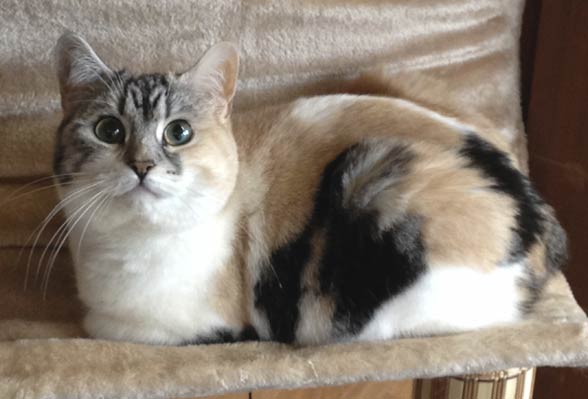
The cat can be sociable
If you let your cat meet many people, it will become very sociable and hospitable. It will greet new visitors along with its owners. The Cymric cat adapts relatively fast to a new home and family.
Thus, it is certainly an intelligent, fast-learning, and mentally flexible cat. It has many dog features – it can be taught to walk on a leash, and it is less afraid of traveling by car than other cats. It also respects rules that have been presented by its owners.
Therefore, it’s not unruly like many other cats. However, if you put a ban on scratching the couch, find some alternative, for example, a cat scratcher. Moreover, show the cat tenderness and love for cooperation, and that it takes care of you.
The Cymric cat is very pro-human, therefore, it requires much attention and the presence of its owners. So choose it only when you are able to provide it real care.
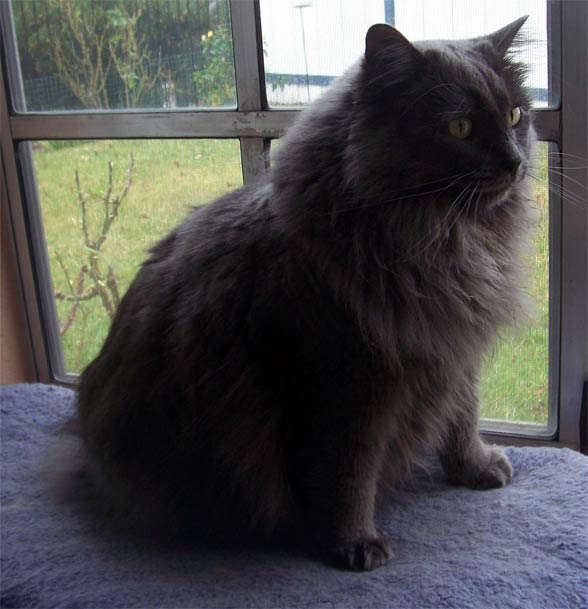
Health
The breed may suffer from:
- Arthritis of the tailbone (in cats with reduced tails)
- Corneal dystrophy and cloudiness
- Teams of birth defects of the spine, resulting from its excessive brevity. In addition, urinary tract defects and internal organs, digestive problems.
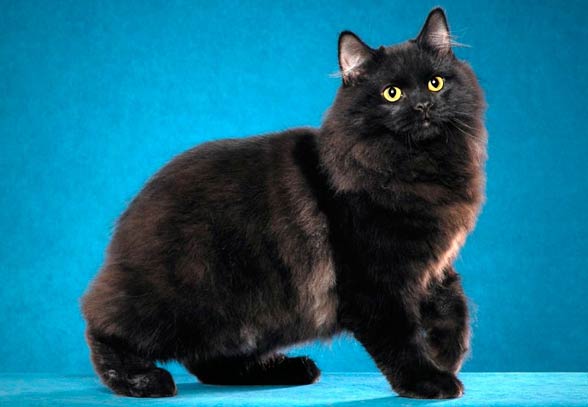
Detailed information / size
Cymric cat
- Weight: 4-6 kg (9 – 13 lb)
- Lifespan: 8-14 years
- Average price: 300-700 USD
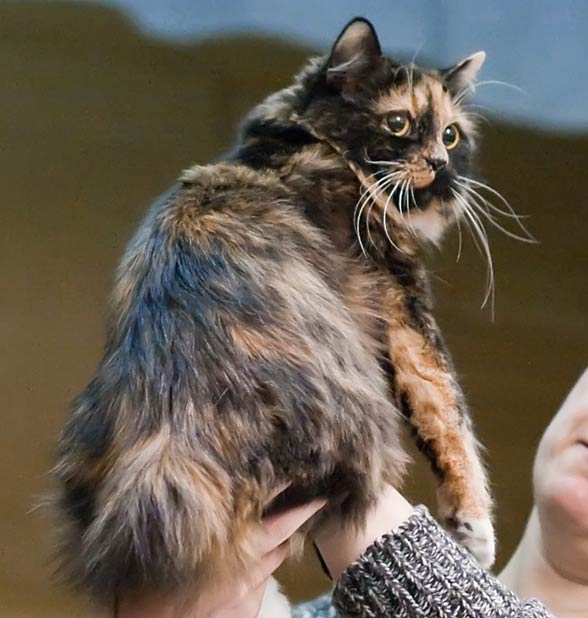
Cymric cat – interesting facts
- The name of the breed comes from the word “Cymru” which is the Welsh name for the Welshmen or Wales itself. The reason for giving the breed such a name was the need of creating a Celtic-sounding name for the breed.
- The “rabbit-like” hind legs contributed to the myth that the Cymric cat is crossbred of a rabbit and a cat (a cabbit).
- Cats of this breed develop slowly – they reach their full body size at the age of about 5 years.
- Collection of birth defects resulting from the spine being too short concern about 20% cats of this breed, rumpies and rumpie-risers the most. The first symptoms of such disorders occur in cats aged about 4 months.
